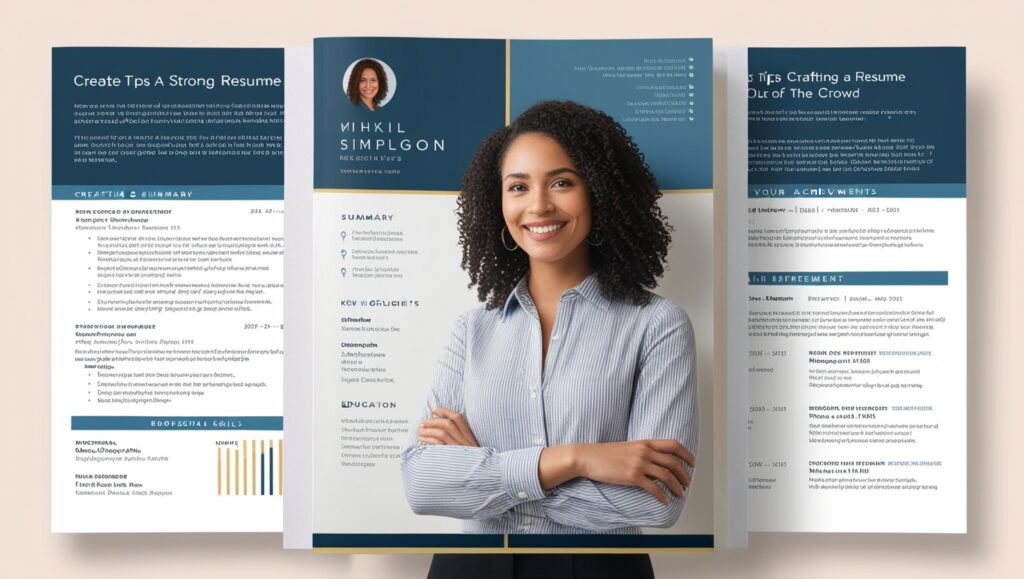How to Write a Resume That Stands Out
In today’s competitive job market, your resume has mere seconds to make a lasting impression on hiring managers. It’s not just about listing qualifications and experience; it’s about strategically presenting your value to prospective employers. To help you create a standout resume that captures attention and lands interviews, here are essential tips for each step of the process.
1. Start with a Strong Summary
The summary or objective section at the top of your resume is your elevator pitch. It should briefly showcase who you are, what you bring to the table, and what you’re looking for in your next role. Tailor this section to align with the job description, focusing on your most relevant skills and experiences.
Example: “Detail-oriented marketing professional with 5+ years of experience in social media management, content creation, and brand strategy. Proven track record of driving engagement and increasing brand visibility. Seeking a dynamic role where I can leverage my skills to enhance digital marketing efforts.”
2. Highlight Your Key Achievements with Quantifiable Results
When listing past roles, focus on achievements rather than just duties. Hiring managers want to know what impact you made in each position, so quantify your results whenever possible. Instead of simply stating, “Managed a team,” say, “Led a team of 5 in executing campaigns that increased sales by 25%.”
Tip: Use action verbs such as “led,” “increased,” “implemented,” or “streamlined” to make your accomplishments stand out.
3. Tailor Each Resume to the Job Description
One-size-fits-all resumes don’t cut it anymore. For each application, take time to tailor your resume to the job description. Look for specific keywords and phrases used in the job listing, and incorporate these into your resume. Many companies use applicant tracking systems (ATS) to filter resumes, and having relevant keywords can help ensure your resume passes through the system.
How to do it: If the job description emphasizes skills like “project management” and “cross-functional collaboration,” be sure to highlight these within your experiences and skills sections.
4. Keep Formatting Clean and Professional
Your resume should be easy to read at a glance. Use a clean, professional font (like Arial, Calibri, or Times New Roman) in a size between 10 and 12 points, with clearly defined section headers. Bulleted lists make it easy for hiring managers to scan your achievements quickly. Aim for a well-organized format that emphasizes readability and visual appeal.
Tip: Keep the resume to one page if possible, especially if you’re early in your career. For more seasoned professionals, a two-page resume is acceptable, but keep the information concise and relevant.
5. Showcase Relevant Skills and Certifications
List both hard and soft skills relevant to the position. Hard skills include specific, job-related expertise such as “data analysis” or “SEO,” while soft skills include interpersonal qualities like “teamwork” and “problem-solving.” If you have relevant certifications or courses that add value to the role, include these as well.
Examples of Hard Skills: Digital marketing, project management, financial analysis, software development
6. Use a Professional Email and LinkedIn Profile
Make sure the contact information on your resume includes a professional email address—preferably one with your name. If your LinkedIn profile is up-to-date, include the link, as hiring managers often check this. LinkedIn can serve as an extended version of your resume, providing additional detail on your skills, endorsements, and recommendations.
Tip: Double-check all links, as incorrect URLs could lead to missed opportunities.
7. Proofread for Accuracy and Consistency
Grammar or formatting errors can detract from your professionalism. Once you’ve completed your resume, go over it with a fine-tooth comb for spelling, punctuation, and formatting consistency. If possible, ask a friend or family member to review it as well—they may catch something you missed.
Checklist for Proofreading:
Correct dates and company names
Spelling and grammar check
Consistent font size and style
Uniform spacing and bullet alignment
8. Add a Touch of Personality
While professionalism is key, a touch of personality can help make your resume memorable. Consider a brief “Interests” section at the end if it’s relevant to the job and company culture. For example, if you’re applying for a role at a fitness company, mentioning that you’re an avid runner or yoga enthusiast can show alignment with their values.
Note: Avoid overly personal information, like hobbies unrelated to the job, as it can appear unprofessional.
Final Thoughts
Crafting a standout resume takes thoughtful attention to detail. By starting with a strong summary, emphasizing quantifiable achievements, tailoring each resume to the job, and maintaining a clean layout, you can ensure that your resume captures attention. Including relevant skills, using a professional email, and proofreading thoroughly add the finishing touches that make your application shine. Following these tips can help you create a resume that not only makes an impression but also opens doors to new opportunities.

